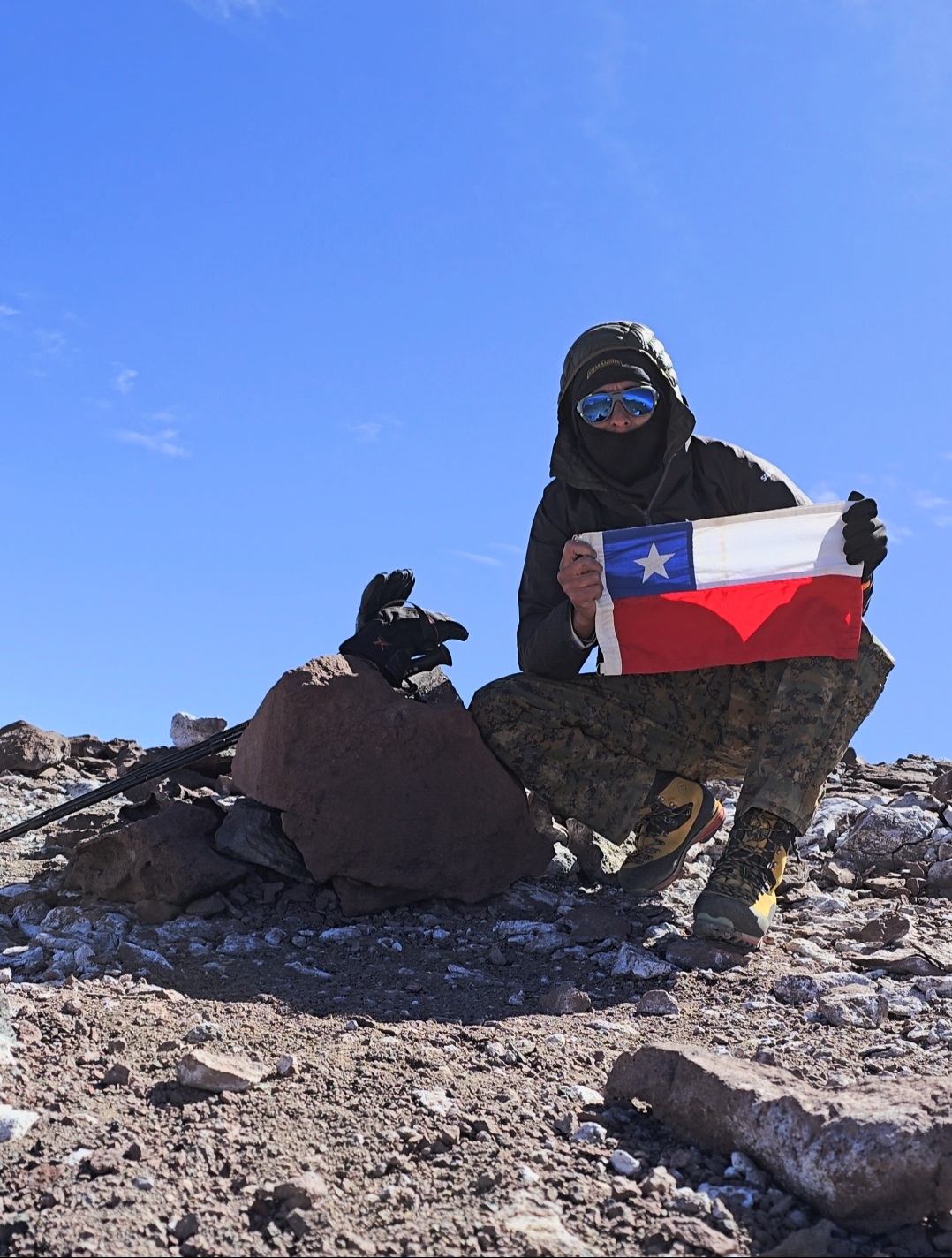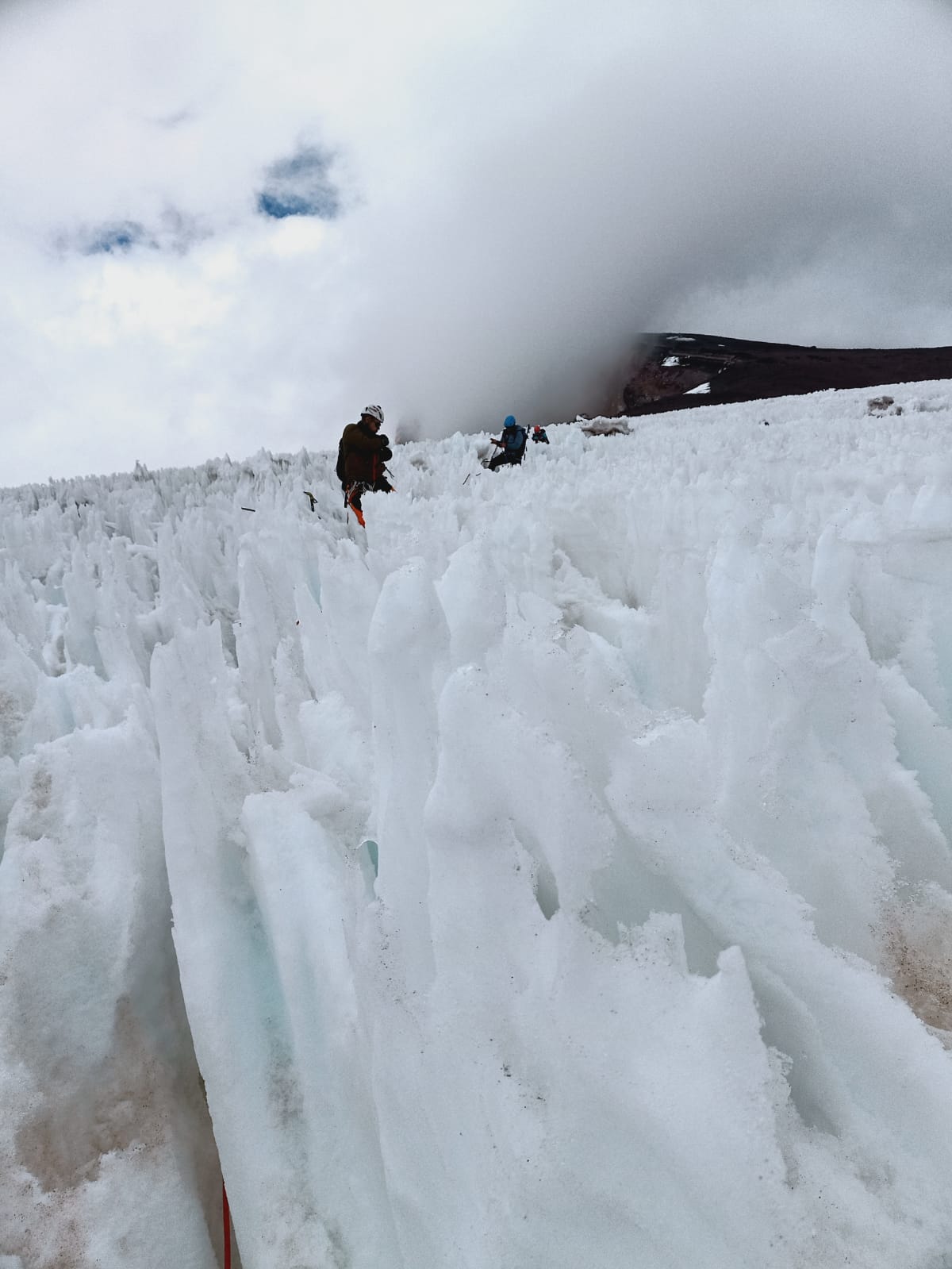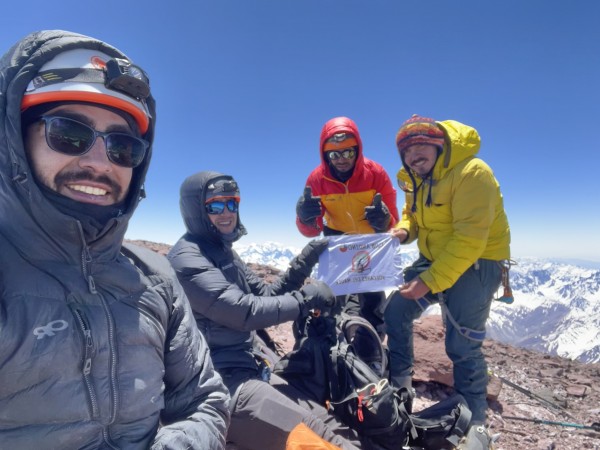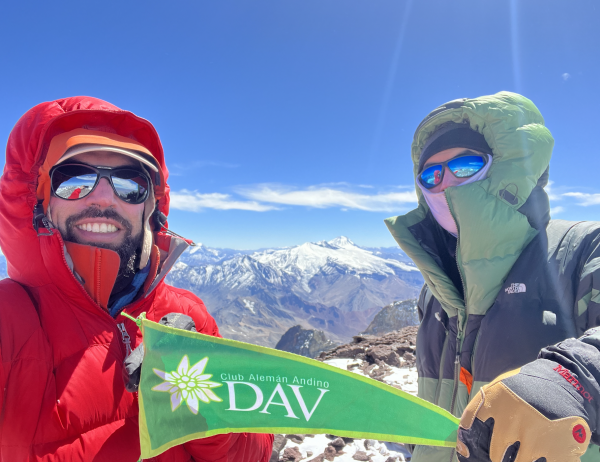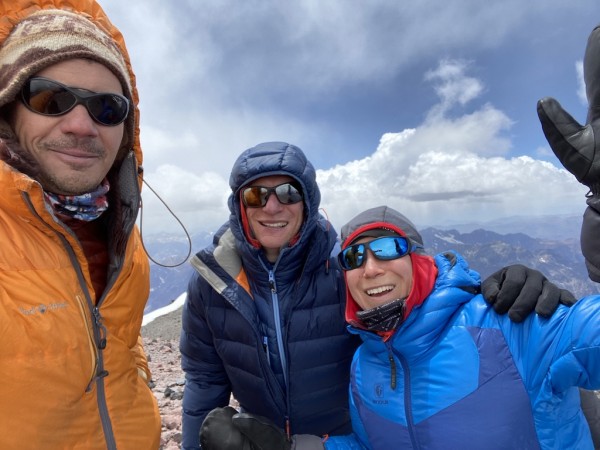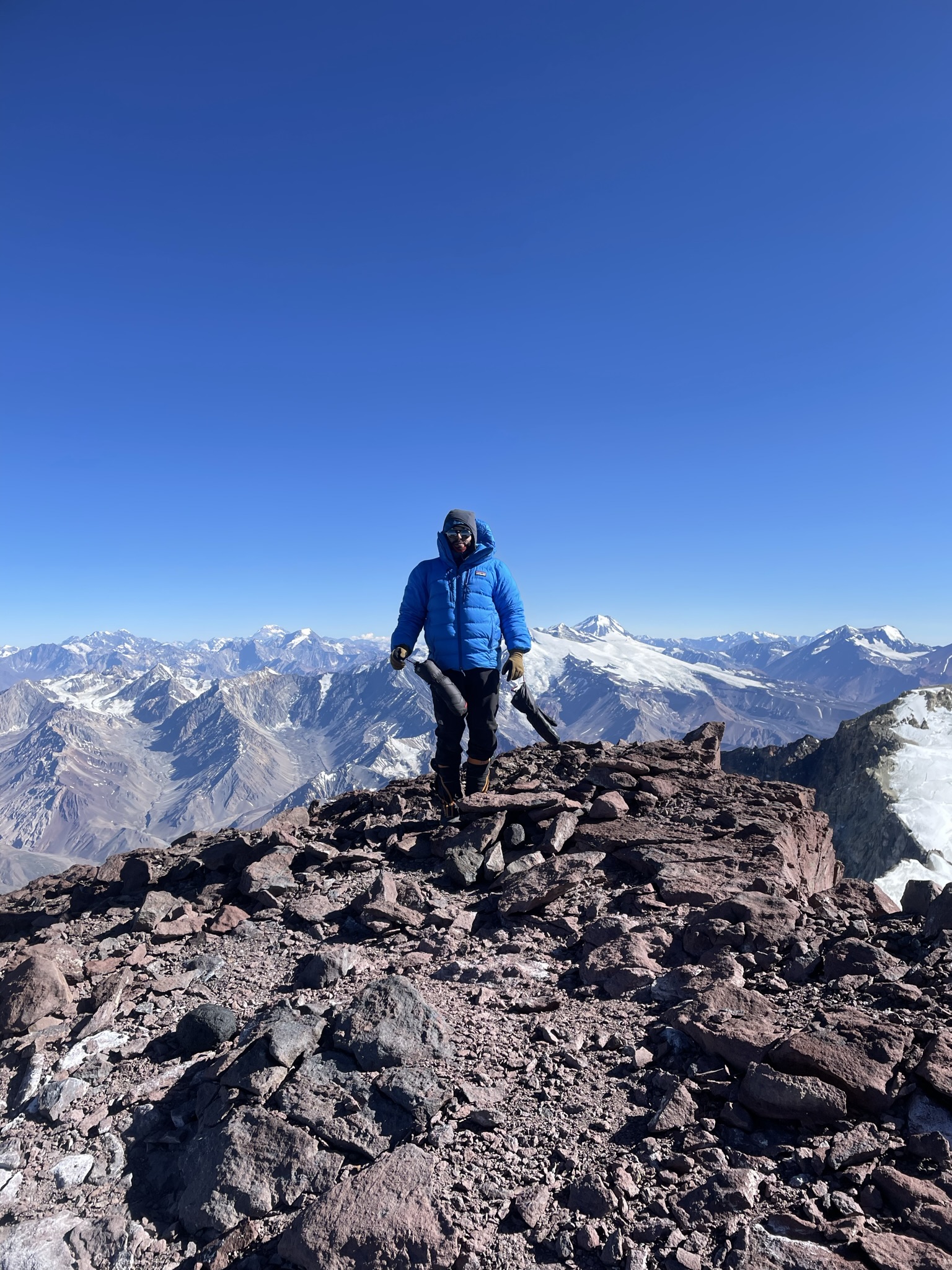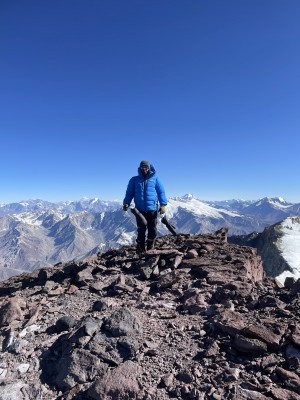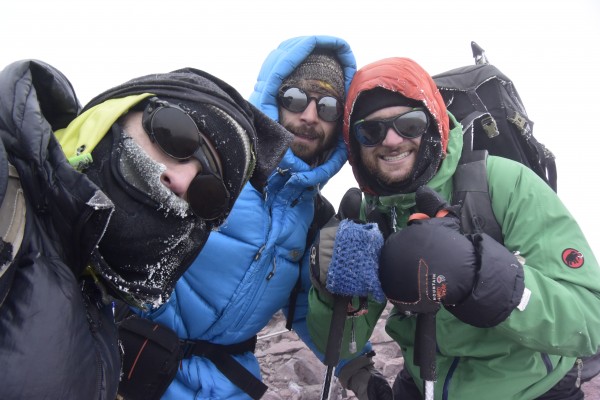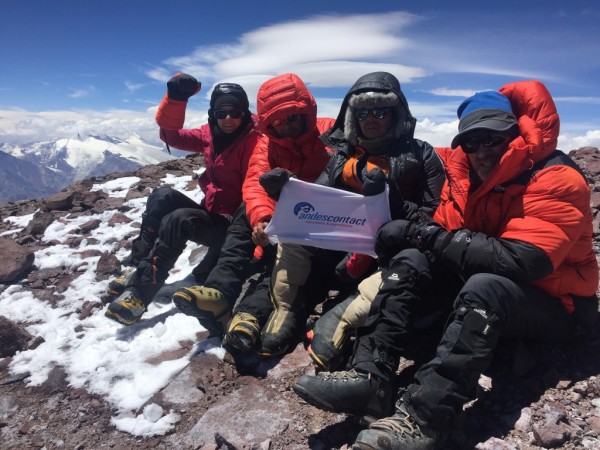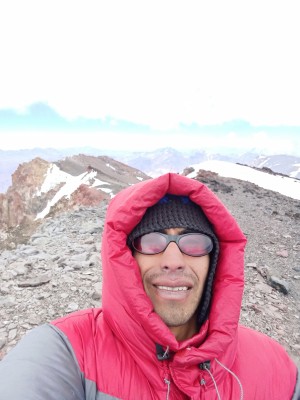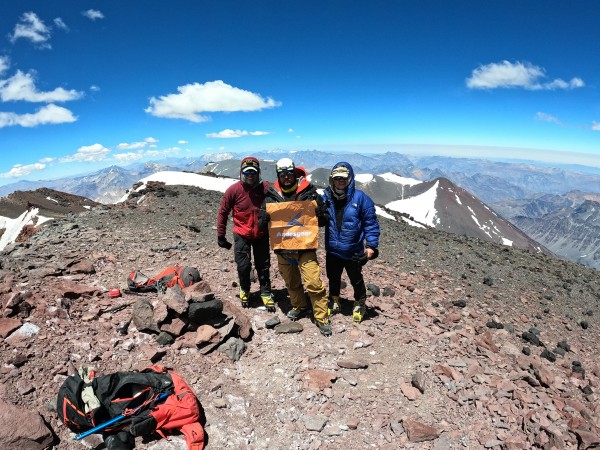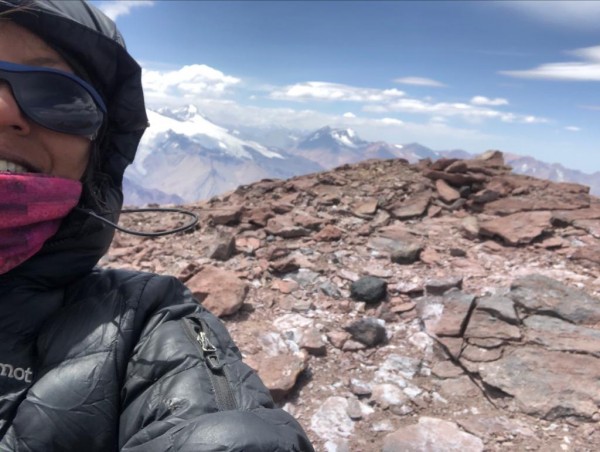Cerro Marmolejo (6.108m)
Región Metropolitana, Volcán San José / Ciudad cercana: San José de Maipo
 AHB Maps
AHB Maps
Fecha publicación: 29-11-2001
Última actualización: 16-01-2025
Presentación
El Marmolejo (limítrofe entre Chile y Argentina) es el último "seismil" de la Cordillera de Los Andes si se recorre ésta de Norte a Sur y su posición geográfica lo hace ser el más austral del mundo (de los seismiles).
Se caracteriza por tener un extenso glaciar (Glaciar Marmolejo) con una extensión máxima de aproximadamente 20km. Esto último y la larga aproximación de unos 25km que se requiere recorrer desde el sector del Morro para llegar a la base de éste lo ha hecho meritorio del nombre "Muy muy lejos" entre los montañistas. Se trata de un centro volcánico compuesto por una gran estructura caldérica de edad estimada Pleistocena y un conjunto de centros eruptivos adventicios emplazados en la vertiente occidental de edad Holoceno-Reciente. No hay registro histórico de la actividad eruptiva de este centro.
Desde las altas cumbres chilenas, el Marmolejo se aprecia arrinconado hacia el Este, como eterno hermano y vecino del volcán San José y del Nevado Piuquenes (o Nevado San Juan.)
Alcanzar la cima del Marmolejo es una empresa ardua y exigente en capacidad física y tiempo, pero un lugar privilegiado desde donde apreciar la curvatura de la tierra y la vastedad de los valles argentinos.
Hipótesis sobre el nombre del cerro*
La palabra marmolejo significa en lengua castellana "columna pequeña". Aunque el cerro no da indicios de presentar forma de columna, si así fuera no se trataría de una columna pequeña. Esto motivó el estudio acerca del nombre del cerro.
Según estudios del autor de esta presentación, el cerro Marmolejo fue bautizado en honor a quien se considera el primer historiador de Chile, don Alonso de Góngora Marmolejo. Don Alonso, natural de la localidad andaluza de Carmona, arribó a Chile junto a la expedición colonizadora liderada por Pedro de Valdivia. Escribió Historia de Chile, una crónica escrita entre 1572 y 1575. Muere el mismo 1575, recién concluida la crónica y poco después de haber sido nombrado por Rodrigo de Quiroga capitán y juez de comisión para el castigo de los hechiceros indígenas. Historia de Chile de Alonso Góngora de Marmolejo abarca el periodo comprendido entre 1536, cuando Almagro descubre nuevos territorios, hasta 1575. Es una crónica poco clara y profunda y que carece de análisis, aunque a diferencia de otros relatos del tipo, no presenta alusiones pedantescas ni descripciones que se alejan de lo verdaderamente acontecido; el estilo es sobrio, directo, conciso y seco a veces.
Del Reino de Chile escribió**:
"tierra de la manera de una vaina despada, angosta y larga"; en otra parte: "Danse las frutas y los árboles della mejor que en España [...]; críanse buenos caballos, mucho ganado de toda suerte [...]; la mar y la costa della tiene grandes pesquerías, buenos puertos para navegantes"
Y sobre la gente (junto a "La Araucana" de Ercilla, Marmolejo inicia lo que viene a ser el mito de pueblo guerrero que tiene Chile): "Son los más belicosos indios y guerreros que se han visto en todas las Indias, y que no pueden acabar consigo a tener quietud, sino morir o libertarse"
El nombre lo habría puesto la excelente Comisión Chilena de Límites que entre 1875 y 1909 cartografió cerca de 2600 kilómetros de frontera andina junto a la Comisión de Límites de Argentina, cuando ambos países acordaron fijar sus fronteras pacíficamente. A cargo de la Comisión Chilena estaba el ingeniero Luis Riso Patrón.
Principales Ascensos
El primer ascenso al Marmolejo fue conseguido en 1928 por los socios del DAV Santiago Albrecht Maass, Hermann Sattler y Sebastián Krückel quienes para alcanzar la cumbre cruzaron a Argentina por el paso de Nieves Negras y ya en territorio trasandino accedieron a la cima. En 1943, la llamada "Cordada de Oro" formada por los también socios del DAV Santiago Ludwig Krahl, Mario Araneda y Walter Bachmann, realizaron el primer ascenso desde territorio chileno. Esta "Cordada de Oro" ascendió el Marmolejo accediendo a él por el valle del estero del mismo nombre y luego subiendo por el glaciar Suroeste. Krahl y Bachmann alcanzaron la cumbre, mientras Araneda, afectado por la puna, los esperó en el campamento alto. Esta ruta, al parecer, no ha sido repetida.
En 1949 los socios del club Wechupún Jorge Arenas y Alfonso Saavedra abrieron la ruta que va desde el portezuelo con el volcán San José. Para hacer esto montaron un campamento en este portezuelo a 5100m de altitud. Los socios del Wechupún reportaron haber encontrado en las cercanías de la cumbre el testimonio de la expedición del Club Coyotes de México del año 1948. En la cumbre misma encontraron el banderín del club mexicano junto a los testimonios del ascenso de 1947 realizado por Luis Bussenius y Juan Gandulfo y el de Walter Bachmann que había ascendido con anterioridad. Con todo esto, el ascenso del Wechupún fue el sexto al Marmolejo.
En 1952 fue abierta la ruta del estero Salinillas, antiguamente conocido como cajón El Peñón, accediendo al cerro desde el Norte. Esta ruta fue abierta por los socios del CACH Óscar Zelaya y J. Zenteno. Dos días antes los hermanos Francisco y Ricardo Vivanco habían realizado una variante a la ruta que va desde el portezuelo con el volcán San José, desviándose hacia Argentina hasta conectar con la ruta del primer ascenso de 1928.
Por su parte el destacado montañista Osiel González consiguió en solitario en 1953 el primer ascenso de la cumbre Norte de 5964m. En 1990 los hermanos Daniel Vásquez Poblete y Mauro Vásquez Poblete abrieron una variante a la ruta de 1943 por la ladera oeste que evita el glaciar.
La pared norte del cerro fue intentada sin éxito en 1962 por miembros de la expedición Chileno-Alemana y en 1980 por Gastón Oyarzún, Francisco Arias e Iván Vigouroux. En 1982 cinco montañistas (Cristián Peña, Juan Pardo, Dagoberto Peña, Nelson Rivera e Iván Vigouroux) de los once miembros de la Pre-Selección al Everest consiguieron el ascenso por esta ruta.
En enero del 2004, Andrés Zegers consiguió el primer ascenso por el día. Partiendo desde el Cabrerío le tomó 12h y 40 min el ascenso y 6h con 10 min el descenso.
Referencias
- González-Ferrán, Oscar (1995). Volcanes de Chile. Instituto Geográfico Militar (pág. 270).
- Vigouroux, Iván. Primera Ascensión a la Pared NO del Cerro Marmolejo. Página web de Perros Alpinos.
- Lucares, Marco (1977). Sintesis de Algunas de las Principales Ascensiones y Expediciones Efectuadas en Chile y Proceso de Selección, Preparación y Equipamiento para Efectuarlos. Anuario de Montaña 1973-1977. Feach (pág. 123).
- Temporada de Andinismo en Chile. Revista Andina N°77, 1952. CACH (pág. 8).
- Ascensiones Andinas. Revista Andina N63, 1948. CACH (pág. 89).
- Krückel, Sebastian (1928). Primera Ascensión del cerro Marmolejo. (Traducción de Ulrich Lorber). Club Alemán Andino.
- Krahl, Ludwig (1949). Erstbesteigung des Marmolejo von der chilenischen Seite. Revista Andina 1949. Club Alemán Andino (pág. 22-25). (Traducción de este artículo).
- González, Osiel (1958). Una ascensión solitaria (Primera ascensión "Marmolejo Norte" 5.050 m). Anuario Feach 1957-1958 (pág. 154-157.
- Fica, Rodrigo (2024). El Ajo de Molibdeno. Editorial Chilena de Montaña (pág. 78).
Notas
*Se agradece a Mario Araneda las primeras luces que dio para motivar esta investigación; don Mario fue miembro de la expedición de la "cordada de oro" del 43, que ascendió el cerro por segunda vez y por primera desde Chile. Según la versión de la Zeitschrift ANDINA, del Club Alemán Andino, la expedición de Maass, Sattler y Krückel ascendió el Marmolejo por Argentina.
**Notas de "Historia de Chile" obtenidas de los Anales de la Universidad de Chile.
Características de la montaña
Primera ascensión
Año: 1928- Albrecht Maass (DE-CL)
- Hermann Sattler (DE-CL)
- Sebastian Krückel (DE-CL)


